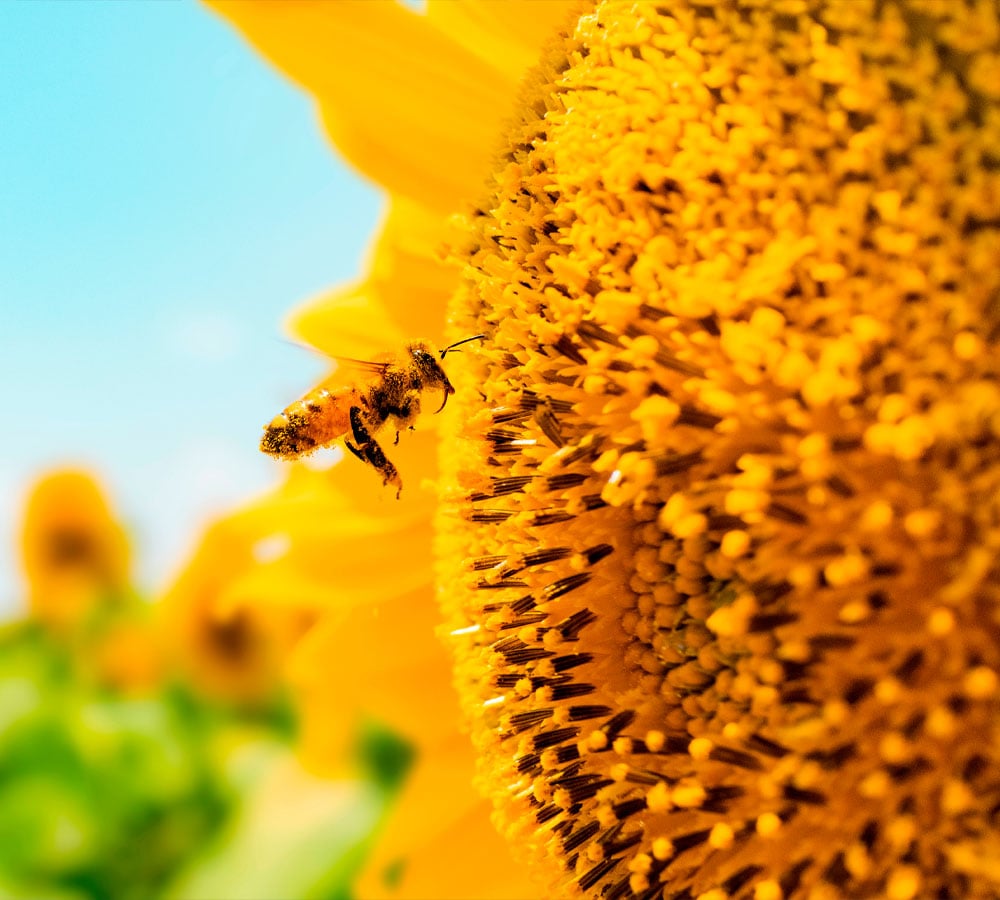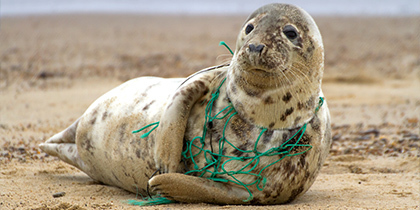October 4 is Animal Day. A day on which we pamper our pets, but also a time to think about animal welfare. Litter is a concrete risk: in the sea and also on land. Octopuses use litter as a hiding place and the animal ambulance regularly reports incidents of animals becoming entangled in plastic. In this blog you can read what litter is, how big the impact is on sea and land animals, and what you can do today to prevent it.
Litter is waste that ends up in the environment. Think packaging, bottles, cans, cigarette butts.
Litter and marine animals: what is the impact?
About 70 to 80% of all litter in the sea is plastic. Some of this stays close to the shore, but a large part collects in five ocean areas where currents converge. These currents spin in circles, carrying and concentrating plastic. The result is a kind of vortex of waste, also known as the plastic soup.
Every year, 11 million tons of plastic end up in the sea worldwide- comparable to a full demand truck every minute, 365 days a year. This affects the entire ecosystem. Plastic affects coral reefs, for example: an important link within the marine system. Reefs provide habitat for a quarter of all marine mammals, protect coastal areas from erosion and currents, and store CO2 just as trees do on land.
Plastic debris also affects animals in and around the sea. Sea turtles mistake plastic bags for jellyfish. Along the Greek coast , plastic was found in the gastrointestinal tract of 26 of 36 turtles washed ashore. Mouth caps have also been a recurring problem since the corona pandemic. These were even recently found in the stomachs of penguins.
Microplastics: what are they and why is it a problem?
Plastic takes a long time to break down. Plastic shopping bags have an average degradation time of 20 years, disposable candy canes 200 years and plastic bottles as long as 450 years. Plastic does not disappear completely, but slowly crumbles into microplastics: tiny plastic particles smaller than 5 millimeters.
These particles are created by sunlight, wave action and abrasion, and are taken up by plankton, which are at the base of the food chain. Fish eat the plankton, seabirds eat the fish - and eventually microplastics end up on our plates, too. Research shows that microplastics have been found in mussels, shrimp and even in drinking water and human feces.

Litter on land: underestimated impact
In the last 20 years, the number of trash cans in major cities has increased about fivefold. A sign that we are producing more and more waste. Despite the admitted number of waste bins, a large part of that waste ends up in nature every year: on streets, in roadsides, parks and forest areas.
In the Netherlands about 50 million kilos of litter ends up on the streets every year. The figures are also high in Belgium. The consequences for animals are great. The animal ambulance regularly reports incidents with animals entangled in plastic. For example, a cat was freed from a plastic net and deer have been spotted entangled in litter, with fatal results. Smaller animals, such as birds, are also at risk: a heron, for example, was found with a plastic cup lodged in its throat.
In addition, research in Germany showed that 30% of livestock had objects in their digestive systems left behind by humans-ranging from pieces of plastic to metal parts of agricultural equipment.
Reducing litter: what can you do today?
Litter prevention starts with small, conscious choices. Are you walking or running and see litter lying around? Pick it up and throw it in the trash. That's how you prevent it from ending up further in nature.
In addition, you can get started with these tips:
- Use a refillable water bottle. This will prevent waste from disposable bottles, which take up to 450 years to break down.
- Use a lunch box instead of sandwich bags.
- Going grocery shopping or shopping? Bring your own bag. By doing so, you reduce the use of plastic carrier bags.
- Check personal care products for microplastics. These tiny plastic particles enter the environment through the sewer system. Look for ingredients such as polyethylene (PE), polypropylene (PP), polyethylene terephthalate (PET), polymethyl methacrylate (PMMA) and nylon.
Reduce litter? It starts with behavioral change
Much (plastic) litter ends up in the environment because the waste is not thrown away in the right place - often because people don't really know where it belongs. That awareness is the first step toward changing behavior - and exactly what is needed to prevent litter from becoming litter in the first place.
Behavioral change in practice
To investigate how behavior around waste separation can be influenced, we talked to a group of students. They were given a bag of mixed waste and tested three different setups with collection tools.
As they made choices, we observed behavior: where did separating go with ease? What role did the type of bin play? Remarkable: although only 20% of the young people described themselves as conscious and purposeful about waste separation, almost everyone made a serious effort to separate waste correctly. This shows: proper waste separation behavior can be encouraged.
Stay informed
Want to stay up to date with the latest developments? Follow us on LinkedIn and Instagram or subscribe to our newsletter. Curious about what Milgro can do for your operations and waste process? Feel free to get in touch .















